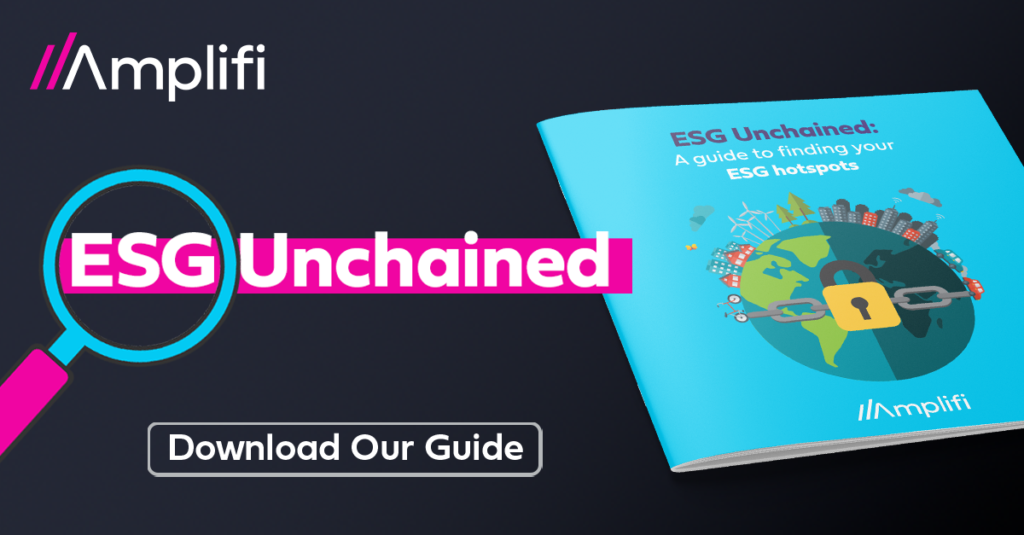Excellent data strategies beget excellent data. And that goes far beyond ESG.
Providing ESG insights isn’t just a matter of showing government and private regulators that your business is being run responsibly – it is fast becoming a financial imperative as well.
Businesses that can prove their ESG credentials are frequently found to be more trusted by both investors and consumers. Likewise, these same stakeholders are more likely to forego dealing with businesses whose talk doesn’t match their actions.
As true for ESG as it is for any other domain, you can only obtain valuable information if your data is robust, well-organized, and accessible. However, a sound data management strategy goes far beyond simple ESG reporting. Well-managed data enables intelligent business decisions: optimizing supply chains, closing technological gaps, and unlocking employee productivity.
What goes into an ESG data management strategy?
 It’s a good start to have the data that you need. But successful data management makes it comprehensive, easy to find, and full of actionable insights for teams and business leaders.
It’s a good start to have the data that you need. But successful data management makes it comprehensive, easy to find, and full of actionable insights for teams and business leaders.
Ambiguity and gaps in the data that you collect lead to mismatches between expectations and actual outcomes (in the most flattering terms).
Though the data you collect for ESG will be particular to your firm and its areas of interest, the principles that go into creating a successful data strategy are the same, regardless of your intended aim.
The foundations of a data management strategy are as follows:
1) Data Governance
Effective data governance ensures that your data says the same thing to everyone who reads it.
For example, if your supply chain emissions data read differently from one team to the next, how can you – or anyone else – trust your ESG credentials?
Competing versions of the truth simply don’t fly when it comes to raw data. This is why solutions such as Master Data Management (MDM) and Product Information Management (PIM) ensure coherence, reliability, and value in the data you collect.
Our free, downloadable guide walks you through the 5 steps needed to achieve better data governance.
2) Data Quality
Data quality is as simple as it sounds: ensuring your data is fit for purpose. Of course, this covers all the basic standards of data entry, i.e:
- No duplicate entries
- No missing fields
- No invalid terminology
- No corrupted or inaccessible data.
You might not be surprised at how these can slip in when dealing with significant amounts of information!
However, achieving good data quality is also a matter of understanding what data is relevant for the outcomes that you want. It’s one thing to put in all the information about, say, employee retention – it’s another to gather actionable insights around why some staff aren’t happy where they are.
3) Data Management Technology
Revisiting Master Data Management; high quality and sound governance of data can only be achieved by freeing it from its traditional silos and making it coherent wherever it’s used.
Moreover, creating a universally accessible repository of data that is available (even if that data is spread across different teams) can allow a broader range of interests to make use of this data, supporting a wider range of strategic outcomes.
The use of AI, automation, and analytics within Data Management technology can help teams draw out ever more detailed insights, and make reporting far more efficient: this is particularly salient when it comes to delivering recurring ESG reports.
4) Data Culture
The power of data, to a significant extent, depends on “buy-in” from your teams as regards its potential. To harness it, you first need to encourage a real cultural shift that impacts everyone from your front line to your C-suite.
Teams that are engaged with data – and convinced of its value to their business unit – are capable of incredible things. Identifying areas for improvement as well as the potential for quick wins, and removing obstacles that can unlock their long-term growth.
If nothing else, it pays to remember that your employees are stakeholders, too, and that many take the ESG commitments of their own companies seriously.
Kick-starting a data transformation is only possible if your people are committed and enthusiastic. Good data makes their lives easier. Our 5 tips on embedding a data culture into your business will help.
What does it mean to be ‘data-first’?
 Even if the exact criteria of ESG reporting are unpredictable, the need to show proof of your claims on a regular basis is already well-known, be that to the authorities, consumers, investors, or a heady mix of all three.
Even if the exact criteria of ESG reporting are unpredictable, the need to show proof of your claims on a regular basis is already well-known, be that to the authorities, consumers, investors, or a heady mix of all three.
Nevertheless, even if companies have the data they need available, they can waste valuable time picking through it again and again.
Thus, taking a data-first approach is key. Having ESG data to hand and generating insights (rather than scrambling before each reporting deadline, risking penalties for incomplete information) is vital.
If it isn’t critical for you yet, rest assured, as your business and its ambitions grow, it will be. Those foundations described above, powered by an extremely robust data management technology all serve a data-first approach.
Better data builds better businesses
It’s as simple as that. With an ever greater dependency on data to inform critical decisions, the quality of that data – and the speed at which you can act on it – marks the difference between leading firms, and losing ones.
So, it holds true that there are far smarter ways of gathering, collating, and analyzing data to show off your ESG credentials. But the key takeaway is not to not let your short-term reporting priorities get in the way of wider ambitions.
A data-first outlook doesn’t just support your ESG aims: it gives you the framework and tools you need to effect data-led change across all strategy areas: from sales and marketing to HR, operations, and finance.
Whether you require a strategy to build a data-first culture from the ground up or the technology to power it, Amplifi can help you perfect the way you manage and deploy data: all it takes is one conversation to get started.


